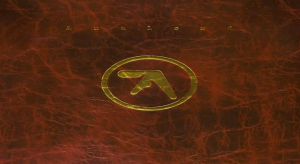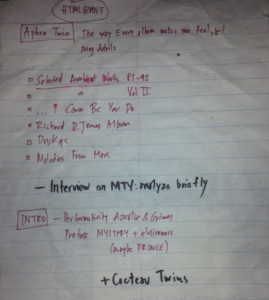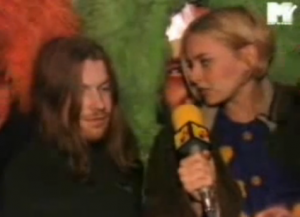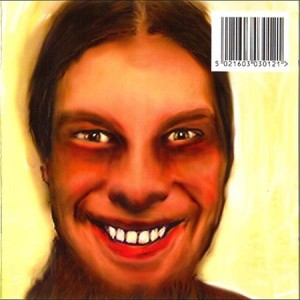25 Points: Götterdämmerung Family BBQ
 Götterdämmerung Family BBQ
Götterdämmerung Family BBQ
by Jasper Bernes and Joshua Clover
Commune Editions, 2013
read, print
1. I met Jasper Bernes at a café in Oakland. He was binding Götterdämmerung Family BBQ with a long arm stapler. Commune Editions is a new publishing venture organized by Jasper Bernes, Joshua Clover, and Juliana Spahr.
2. Jasper invited me to the Poetry and/or Revolution conference-taking place at UC Berkeley, Davis, and Santa Cruz. I went to a discussion on manifestos where Joshua Clover delivered his Don’t Put the Rabbit in the Hat. Later, at “The Public School” Joshua and Jasper read from Götterdämmerung Family BBQ.
3. If it’s not clear you can read this online here along with works by Juliana Spahr, Diane Di Prima, and Louise Michel.
4. Poems. These are poems. Don’t forget. They look like poems. They taste like poems. They’re also full of frenetic pop culture references and blatant political antagonisms. They’re fun, but they’re trying to fuck shit up all the same.
5. The line that got the biggest cheer / laugh / reaction from the reading was “I wandered lonely as a drone / That floats o’er jails and landfill / And monitors what we say on the phone. // It knows an amazing amount / About One Direction / And sexting with frenemies of / the public good, who burn in the sun // of total transparency, / brains open to the screen / Memories of one Friedrich von / Ludwig von Mises on scene…”
6. There’s a kind of opulence to lyric like that – a lyrical richness, a sickly sweetness from the rhyme, an excessive beauty. Some other writers, like Julian T. Brolaski, and Joyelle McSweeney, also capture a kind of perverted poeticism, a lavish absence, bastard cousin of luxury rap. “I’m early to the party but my ‘rarri is the latest.”
7. While “I wandered lonely as a drone” pleases, much of the rest of the chapbook is more of a call to arms and a more vigorous critique of political ambivalence. “Your vocabulary did this to me and millions like me, the vulnerability of words wanna be starting something else: rockets, rain, renegacy. Turn it upside down and set it on fire / is too a solution if you believe in emotional truth”
8. Responsibility, commiseration, complicity. This work sits firmly on the let’s do something with our poetry side of the aisle, rather than the “everything is meaningless” or the “poetry can’t do real shit” side of the weird looking aisle.
9. Jasper told me that Commune Editions would focus on work with an anarchist lean. Publishing a recounting of the trials of Louise Michel achieves that in more than one way.
10. “We once thought that there was more to life than breathing carbon emissions through the holes in our faces and we were right” READ MORE >
October 31st, 2013 / 12:31 pm
STRANGE INTRUDERS
 Strange Intruders
Strange Intruders
by David Weatherly
Leprechaun Press, August 2013
173 pages / $16 Buy from Leprechaun Press
I was initially hesitant to read this book and write this review. To even acknowledge the presence of these ulterior intelligent forces, to name them and to give them recognition is to give them energy through the concentrated power of belief. Belief has the power to move mountains, to create and destroy empires. Belief in these nightmarish boogeymen acts as an invitation to them, to allow them to infiltrate the psyche in some subtle way. Weatherly writes, “Traditional lore says that speaking about the djinn too much, or too loudly, will attract their attention and cause them to trouble you. They often take their time, lurking about and learning as much as they can about a person to decide how best to take advantage.” On this note, I encourage readers to explore this material with caution.
David Weatherly’s Strange Intruders is a chilling look at the ulterior intelligent forces that manifest as strange entities that have been encountered all over the world. Weatherly specifically examines black-eyed beings, Djinn, shadow people, the Grinning Man, Pukwudgies, shapeshifters, the Slenderman, and other nightmarish entities that come from the periphery. Weatherly focuses on these lesser-known entities that continue to unsettle, and Strange Intruders is revelatory simply because there is scant literature out there on many of these beings. Weatherly examines this rogues gallery of nightmarish entities as well as “the strange nonhuman presence” that accompanies these encounters.
Weatherly’s previous book, last year’s The Black Eyed Children, has already become something of a minor classic in the field of high strangeness. Although Strange Intruders contains a handful of new encounters with black-eyed entities, it broadens his scope to include a variety of entity encounters, sort of like an updated version of The Complete Guide to Mysterious Beings by John A. Keel but with a focus on humanoid entities and the disturbing intelligent forces that hide in a human-like form. Weatherly’s clunky prose and occasional grammatical errors are mostly excusable because serious literature on these entities is hard to come by. These accounts are unsettling at a primal level.
One highlight of Strange Intruders is the chapter on the Grinning Man, a tall, thin and oddly dressed man with a freakishly exaggerated grin on his face. Weatherly claims to have encountered the Grinning Man in the late 80s and his experience recounted here is as bizarre and unsettling as any.
One of my favorite parts of the book was the chapter on shadow people. The shadow people have been described as “a mist of black energy” and “humanoid forms that appear to be made of pure darkness.” The shadow people have been the subject of many excellent episodes of Art Bell’s Coast to Coast AM. Weatherly writes, “Another intriguing theory proposes that the shadow beings are actually the manifestation of pure thought or negative energy. Like the classic Tulpa of Tibetan lore, these beings are a creation of concentrated energy, taking physical form and attempting to ‘feed’ on the energy of fear and dread that they invoke in their victims. These types of beings can eventually take on solid, physical form once they have taken a sufficient amount of energy.”
This theory cleverly modifies a famous belief of Keel’s. Instead of the planet itself being haunted, it is the human psyche that is being haunted. The psyche is fragmented every night through sleep and through dream. When we wake in the morning we often have little or no recollection or what happens in the sleep state. In sleep and dreams we may become vulnerable to these ulterior intelligent forces to infiltrate our intelligence, often in the subtlest ways. Weatherly’s next book is supposedly about Tulpas and thought-forms, and I’d be very interested to see him elaborate on this intriguing theory.
However, there is no one theory that adequately explains the existence of all these nightmarish entities, and the unknowable nature of this phenomenon adds to its unsettling nature. In a terrifying chapter entitled “Hiding in Human Form,” Weatherly examines cases where disturbing entities appear as humans who shape-shift into sinister black-eyed beings and other disturbing manifestations. This is reminiscent of Keel’s disturbing look at ‘artificial humans’ and other odd humanoids in The Mothman Prophecies.
October 31st, 2013 / 11:00 am
Halloween Guest Post: SPOOKY SPOOKY by Jereme Dean
Halloween isn’t just the fat kid’s holiday or an excuse for women to dress in revealing costumes, it’s a celebration of the darkness in all of us, that which civilized society is desperate to deny.
Most importantly, it’s a reason to watch kick-ass movies.
Below is a list of films, via youtube, that most probably haven’t seen. The quality of some are moderate, but enjoyable, and adds to the charm of the film, especially those from the seventies.
I feel like most people right now watch whatever is conveniently served via Netflix, Amazon or Hulu The hunt has been lost with the near death of the video store. Something I personally dislike.
My goal isn’t just to talk about movies but also to encourage people to go outside of their cycles, to look for films worth remembering.
Happy Halloween, shitheads.
APHEX TWIN: AN ENIGMA
Recently a friend accused me of not listening to any music that is not rap. Of course that is totally untrue, but in a social context it is somewhat correct: publicly the music I am most likely to enjoy is rap. Privately, I have always listened to different music as well, especially while working/ writing.
When I was in college I used to do most of my work in a very claustrophobic, constrained space to avoid all possible distractions. It was a lab that was equipped with a large Mac desktop and a bunch of equipment that I never used, because the lab was actually intended for the “New Media/ Critical Theory Studies” kids and during that time I was learning different stuff I am no longer using today. It was around that time I first became obsessed with Aphex Twin’s music, definitely starting with ‘Selected Ambient Works 85-92.’ I loved the combination of the productive/ manic energy of the beats and the simultaneous soothing effect of the majority of the melodies in the album. I remember listening to “Ageispolis” after–and during– sleepless nights of meticulous studying, sometimes watching the very ravey video as a study-break.
I have been thinking and wanting to write on Aphex Twin for a long time, but my wish proves to be a somewhat impossible task. Richard James–also known under his pseudonyms: AFX, Blue Calx, Bradley Strider, Caustic Window, Smojphace, GAK, Martin Tressider, Polygon Window, Power-Pill, Q-Chastic, Tahnaiya Russell, The Diceman, The Tuss, and Soit-P.P–is someone who definitely chooses to be an enigmatic figure. James has spent a great deal of his career creating an unflattering image of himself intentionally. The point behind his dedication to making the world see him as an unattractive individual remains unclear to me, but that is part of his enigma.
Initially, I was planning on doing a mini-series of sorts on “The Way Every Richard James Album Makes Me Feel.” Ultimately, I am deciding against proceeding with that idea because it might be relentlessly self-absorbed and perhaps even too-revealing for no-reason. Instead, I present you with my deepest wish of someday writing the absolute Aphex Twin profile after spending a month with him, observing his daily life, work habits and nightlife activities.
This 7-minute MTV interview is maybe the closest the artist wants us to get in understanding Richard James.The interviewer asks him what he means when he says that he builds his own instruments, and he states that he uses software, computers and the net to create. Often, he uses the help of others to perfect his sound. Questions about the way he releases his music continue, and his laidback attitude makes me admire him even more. It is particularly interesting to me to see the vibe between him and his enthusiastic interviewer. The interviewer clearly recognizes his genius and tries, at points perhaps too hard, to instigate a more intricate interview. Richard James seems humble, composed in a careless manner, soft-spoken and completely unaware of how brilliant he is.
Day One: An Amazon Joint
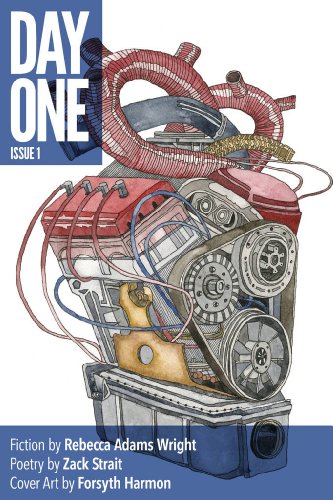 The publishing arm of Amazon announced that they’re going to publish a weekly journal called DAY ONE. It’s for the Kindle and will feature short stories and poetry. The first issue is now live. An annual subscription costs $20 but right now it’s only $10.
The publishing arm of Amazon announced that they’re going to publish a weekly journal called DAY ONE. It’s for the Kindle and will feature short stories and poetry. The first issue is now live. An annual subscription costs $20 but right now it’s only $10.
Their motivation for creating the journal is funny: basically, they say, sometimes it’s hard to know what to read next, “With so many things competing for your attention in this increasingly digital world … especially if you are looking for fresh voices and new perspectives.”
I subscribed.
The editor’s note from Carmen Johnson reiterates the mission, to “feed an audience of literature-hungry, time-constrained readers.” To do this, they went to MFA programs to find writers. They don’t name them, though this issue’s poem comes from Zack Strait, a student at Wichita State.
Along with Strait’s poem—called “Wrought,” and it is, heavily (“Grandpa could forge any object/from tobacco smoke//like a sideshow illusionist//when he worked for the Union/Pacific Railroad”)—there’s a short story by Rebecca Adams Wright called “Sheila.” Haven’t read it yet. It’s “22 pages” if your font size is the third smallest. Day One doesn’t list percentages like the other book I’m reading on my Kindle now: The Battle of $9.99, about the eBook pricing war against Amazon. However, this eBook is put together better than most, with easy jumping around and a nicer table of contents than I’ve seen on my Kindle Fire before.
There’s also a conversation between Strait and Wright. In the first question Wright asks about influences, and Strait says, “That’s a great question!” They seem very nice. The contributor notes are separated; there’s one for the writer and another for the poet. Maybe One Day we won’t have to distinguish the two things. Day One does give equal attention to the illustrator.
It feels a little strange supporting Amazon this way, and having things I care about supported by Amazon. Strange reciprocity! Should it feel strange that suddenly Amazon—one of the biggest companies in the history of the world—finds something marketable about poetry?
Will Day One be as good as my favorite journals, like Hobart and PANK and Big Lucks? Will it be as edgy as the best online journals, like Robot Melon and NOÖ? Will it aspire to be more like VQR or New Yorker? Does Day One allude to Everyday Genius?
Would you publish with Amazon? I know there are a few htmlgiant readers who already do. How’s it going?
Spiral Into Horror: A Review of Uzumaki by Junji Ito
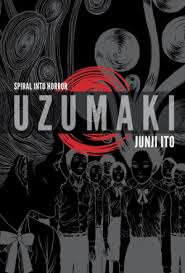 Uzumaki
Uzumaki
by Junji Ito
VIZ Media LLC, Oct 2013
648 pages / $27.99 Buy from Amazon
The coastal town of Kurouzu-cho is infested with spirals. They manifest in ramen, on pottery wheels, in the fields and sky. The obsession with spirals seizes the town’s residents like a fever, causing intense paranoia, fear, madness and eventually complete transformation. Slow-moving students transform into snail people; others stretch their bodies into spirals just to die. When she notices that human fingerprints are spiral-patterned, one woman cuts off her fingertips with a pair of scissors. A potter becomes obsessed with the grotesque ceramics that emerge from his kiln after the spirals infect the lake where he gathers clay. The teenage lovers of warring families transform into serpents and vanish into the sea, never to be seen again. Hideous and beautiful transformations, death of family, death of community, death of self: this is the world of Uzumaki.
In episodic chapters, the first half of Uzumaki charts the increasingly nightmarish bodily horrors that afflict the residents of Kurouzu-cho. But about halfway through, when a hurricane decimates the town, the story shifts gears from Cronenberg territory into a suspenseful, nightmarish tale of survival. To make the situation worse for the few survivors of the hurricane, the town no longer allows anyone to leave. They’re trapped. A succession of rescue crews also find themselves stuck in Kurouzo-cho, knowing they are only minutes from the edge of town, but unable to get back. The only structures not impacted by the daily onslaught of spiraling whirlwinds are the decaying row houses on the edge of town. With no connection to the outside world and supplies running low, the survivors take desperate measures, forming gangs (including a horde of sinister children who surf the whirlwinds and kill anyone who ventures out of the row houses) and eating whatever they can find, even cannibalizing anyone unlucky enough to transform into a snail person. Then, in the final chapters, Uzumaki shifts gears once again, kicking it up to full-throttle cosmic horror that rivals anything ever written by Lovecraft.
 The new hardcover edition from VIZ Media is a welcome upgrade over the paperback volumes. In this larger format book, Junji’s Ito’s starkly beautiful black and white artwork looks better than ever. Although the film adaptation of Uzumaki captured the general strangeness of the work, this is a story that’s best told in black and white. The images are horrific but naturalistic, and there’s a subtlety to the characters in both the art and dialogue that makes them more sympathetic and relatable than the characters in most of the manga I’ve read. Arguably Junji Ito’s crowning achievement, and without a single dull page in the mix, it’s 600+ pages of terror and beauty. My wife and I each keep a shelf of books we’d take with us in the event of a zombie apocalypse. These are the books that mean the most to us, the ones we couldn’t bear to part with. This edition of Uzumaki in hardcover instantly earned a place on my zombie apocalypse shelf.
The new hardcover edition from VIZ Media is a welcome upgrade over the paperback volumes. In this larger format book, Junji’s Ito’s starkly beautiful black and white artwork looks better than ever. Although the film adaptation of Uzumaki captured the general strangeness of the work, this is a story that’s best told in black and white. The images are horrific but naturalistic, and there’s a subtlety to the characters in both the art and dialogue that makes them more sympathetic and relatable than the characters in most of the manga I’ve read. Arguably Junji Ito’s crowning achievement, and without a single dull page in the mix, it’s 600+ pages of terror and beauty. My wife and I each keep a shelf of books we’d take with us in the event of a zombie apocalypse. These are the books that mean the most to us, the ones we couldn’t bear to part with. This edition of Uzumaki in hardcover instantly earned a place on my zombie apocalypse shelf.
The universe of Uzumaki is one frighteningly indifferent to humankind. Natural disasters devastate entire populations, prayers go unanswered, patterns of history repeat with the unfeeling resolve of the rising sun. The classic horror stories of Poe and Lovecraft reflect the imaginings of damaged, stunted psyches, but Junji Ito’s horror stories are nascent, intelligent, reflecting the degradation of normal people and normal society. They come from the mind of someone who understands that terrible, impossible shit happens and confronts it with an unflinching, stable eye. That’s why I’ll take Ito’s imaginings over those of almost any other horror writer/artist/filmmaker. That’s why I’d say if you read just one manga in your life, let it be Uzumaki. It’s simply one of the greatest horror stories ever told, in any medium.
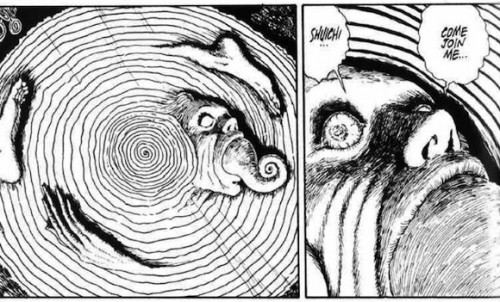
***
Cameron Pierce lives in Portland, Oregon. He is the author of nine books, including the Wonderland Book Award-winning collection Lost in Cat Brain Land and Die You Doughnut Bastards. He is also the head editor of Lazy Fascist Press.
October 30th, 2013 / 11:00 am
Some Book Giveaways = Free Books, Maybe?
Penny-Ante Editions has a bunch of book giveaways happening right now on Goodreads. If you’re on Goodreads, enter to win. If you’re not on Goodreads yet, it’s free to sign up.
You can enter to win:
 Damnation by Janice Lee
Damnation by Janice Lee
My newest book. I know a bit of shameless self-promotion.
No technique of cinema is as royal and as risky as the Long Take—audacious in its promise of unified time and space, terrifying in what that might imply. Inspired by the films of Hungarian auteur Béla Tarr, famous for his long take, and the novels and screenplays of Tarr’s great collaborator László Krasznahorkai, Janice Lee’s Damnation is both an ekphrasis and confession, an obsessive response, a poetic meditation and mirror on time; time that ruthlessly pulls forward with our endurance; time unleashed from chronology and prediction; time which resides in a dank, drunk, sordid hiss of relentless static. As declared in Béla Tarr’s film Damnation, “All stories are about disintegration.”
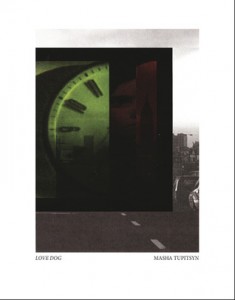 Love Dog by Masha Tupitsyn
Love Dog by Masha Tupitsyn
In 2011, Masha Tupitsyn published LACONIA: 1,200 Tweets on Film, the first book of film criticism written entirely on Twitter. LACONIA experimented with new modes of writing and criticism, updating traditional literary forms and practices like the aphorism and the fragment. Re-imagining the wound-and-quest story, the love narrative, and the female subject in love in the digital age, Love Dog is the second installment in Masha Tupitsyn’s series of immaterial writing. Written as a multi-media blog and inspired by Roland Barthes’ A Lover’s Discourse and Mourning Diary—a couple in Tupitsyn’s mind—Love Dog is an art book that is part love manifesto, part philosophical notebook, part digital liturgy.
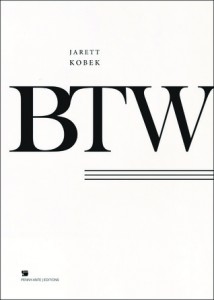 BTW: A Novel by Jarett Kobek
BTW: A Novel by Jarett Kobek
Bad relationships, interracial dating, cross-faith intermarriage, the endless pangs of monogamous love, reality television, Muslim fundamentalism, Crispin Hellion Glover, Internet pornography, Turkish secularism in the era of Erdoğan, the amorous habits of Thomas Jefferson, errant dogs, monogamous cheeseburger tattoos, alcoholics without recovery, 9/11 PTSD, female Victorian novelists, the people who go to California to die. Jarett Kobek’s second novel, BTW, presents the tragicomedy of a young man in Los Angeles balancing a lunatic father, two catastrophic relationships, identity politics, and American pop culture at its most confused.
 Mandy, Charlie & Mary-Jane: A Novel by Stewart Home
Mandy, Charlie & Mary-Jane: A Novel by Stewart Home
Charlie Templeton, his wife Mandy, and student mistress Mary-Jane Millford survived the London terrorist bombings of 7/7, but history has yet to be made. To save the future of western civilization, Charlie, a schizoid cultural studies lecturer with a penchant for horror films and necrophilia, must fight the zombies of university bureaucracy and summon the will to become the last in a long line of mad prophets announcing the end of art
Enter to win Mandy, Charlie & Mary-Jane.
 Antiepithalamia: & Other Poems of Regret & Resentment by John Tottenham
Antiepithalamia: & Other Poems of Regret & Resentment by John Tottenham
Antiepithalamia & Other Poems of Regret and Resentment is John Tottenham’s second book of poetry, a sequence of mean-spirited love poems, paying particular respect to the institution of marriage, and a meditation on the subjects of regret and resentment. Morbid, bitter, self-pitying… perhaps, but offered in the spirit of giving as a tonic to those who are not blissfully content in love and work, and as a bracing antidote to the disease of unconvincing positivity that seems to infect almost every area of contemporary culture.
here’s an excerpt from an update on the Facebook Page created to help gather support of Sandra Simonds’ call for the Poetry Foundation to do more to help poets in need:
“This afternoon Jenny Gropp Hess participated in a conference call with Elizabeth Burke-Dain, the Poetry Foundation’s Media and Marketing Director, and Ydalmi Noriega, the Special Assistant to President Robert Polito. Burke-Dain and Noriega communicated that the letter and petition introduced a real need for the Foundation to change and refine some of its processes, such as figuring out how to better support programs like Poets in Need and (more…)
25 Points: Gulag
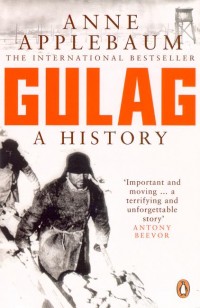 Gulag
Gulag
by Anne Applebaum
Anchor Books, 2004
736 pages / $18.95 buy from Amazon
1. Roughly speaking, the Gulag was the soviet prison camp system that operated from about 1919 through the late 1950’s, though some camps lasted right up until the collapse of the Soviet Union itself
2. Anne Applebuam, the author of this work, has never been a prisoner in a Gulag. In fact Applebaum is pretty much the total opposite of most people who were in the Gulag system, who were by and large poorer Russians and eastern europeans of various national origins. Applebaum is a member of America’s patrician class. She went to Yale and Oxford, worked as a foreign correspondent for The Economist, and is married to the foreign minister of Poland.
3. I can’t help but wonder if one reason Applebaum decided to tackle such a grim, destitute subject is because, like many people who have a fairly secure, lofty station in life, they are morbidly fascinated by the sheer horror of tragedies beyond their geographic and chronological frame of reference. (note: while I am not a member of said lofty station, I am not currently starving to death and am myself often fascinated by horrific national tragedies)
4. I don’t want you to think that Anne Applebaum simply wrote this book out of some universe of vast privilege and is just sort of casually looking down and and trying to explicate history like the Queen of England talking about what’s happening in Syria with the Prince of Wales at afternoon tea or something. The Gulag system as a topic is so enormous, so horrifically cruel and violent, that she obviously had to submerge herself into it to a degree and for a length of time that most people, let alone most writers of history, would probably find appalling.
5. To be honest, I think her outsider status here works to her advantage more than anything. Most of the Russian language works about the Gulag she cites are very emotionally powerful, but they tend to become monotonous and sort of blend all together in a single,very Slavic voice of total despair. You can only read so many descriptions of old women bitterly weeping while receiving their daily bread ration before it becomes this easily dismissible rhetoric of misery.
6. This book is about 700 pages long. About 110 pages of that length is source notes and bibliographical information of one kind or another. Anne Applebaum offers a tidal wave, like an actual wave that engulfs you, of background information and first hand accounts of what life was like in the Gulag system.
7. While reading it I kept wondering if I would ever have it in me to write a 700 page long book of which 1/7 is pure reference information. I mean, I get that people do that sort of thing for a PHD, but that is presumably a big incentive to finish a book. Did she get some kind of advance for this? Or was this just a kooky little pet project she nursed along for years on her own?
8. This is the single most painful work of non-fiction I have ever read.
9. No, really.
10. If the perpetrators of the Holocaust were, as Hannah Arendt famously wrote, committing the banality of evil, then the Gulag system is about the banality of apathy. At no point was the cruelty of the system or of the administrators of the camps or the guards ever mandated. The purpose of the Gulag was never that of the Nazi camps (even if they do bear horrific similarities), in fact, the actual idea of what this whole prison camp system was for fluctuated a lot over time. Sometimes it was about trying to rehabilitate prisoners, sometimes it was about using their slave labor to turn a profit, sometimes it was just about getting rid of undesirable elements and sending them 10 time zones away in the arctic waste. Though that last thing is literally the only thing it did that actually worked. READ MORE >
October 29th, 2013 / 12:15 pm


